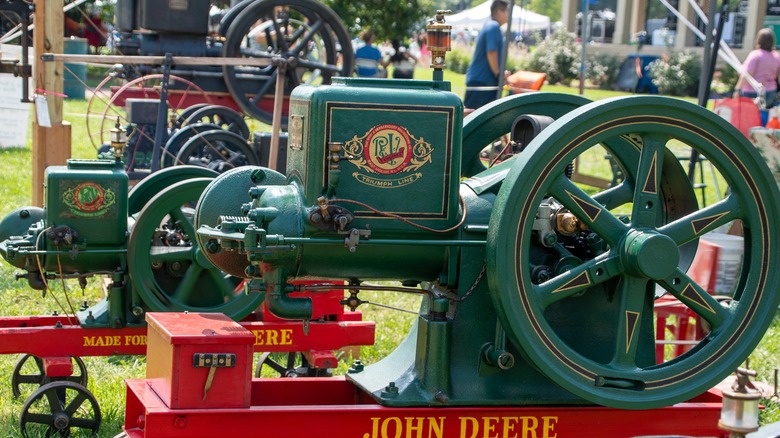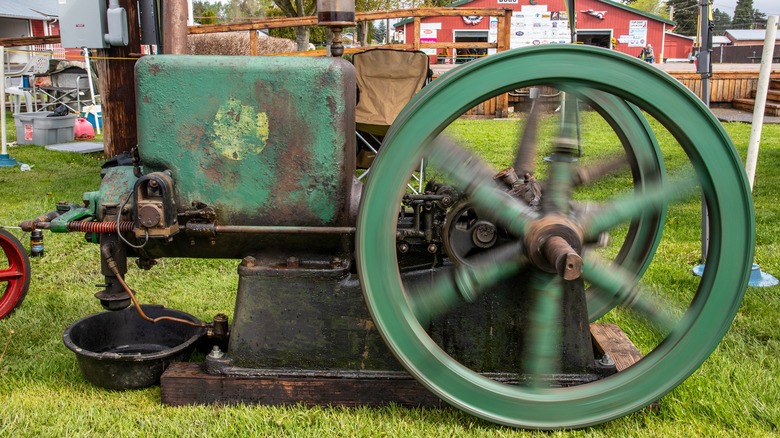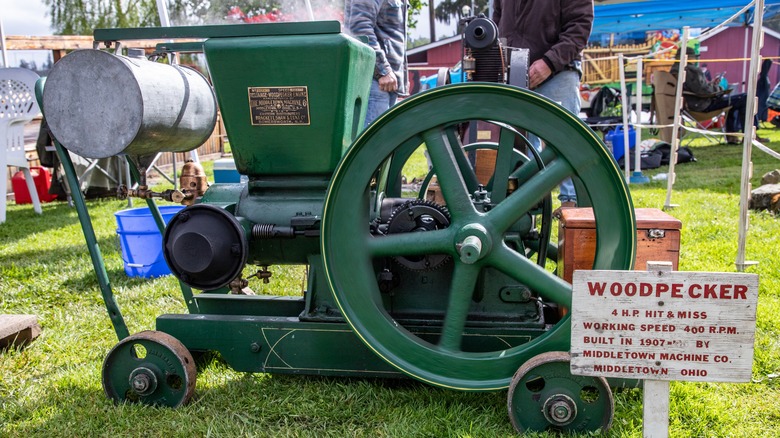What Were Hit-And-Miss Engines Used For And How Do They Work?
The original concept of combustion engines as we understand them dates as far back as the late 1800s. And while they are more or less a solved science today, they definitely didn't start that way. After the original concept started to become popular, various kinds of offshoots began to crop up, with every tinkerer and gearhead looking to be the one to move the proverbial dial on engineering history forward even a single notch. One such example of these efforts came about right at the tail end of the 19th century, not long after combustion engines were really taking off: the Hit-And-Miss engine.
First taking off in the early 1900s, the Hit-And-Miss engine was a new kind of stationary engine that could provide power to all kinds of tools and utilities. Unlike the reliable gasoline engines we're familiar with, this kind of engine wasn't meant to be used on consumer automobiles, but rather just about every other kind of motor-powered device, especially those you might find on a farm.
A Hit-And-Miss is a four-stroke engine that fires at set speeds
A Hit-And-Miss engine is a four-stroke internal combustion engine equipped with a single piston. Like most combustion engines, it was typically powered by gasoline, though it could also be made to run on kerosene or diesel. The basic energy-generation process is the same as a traditional combustion engine: A combination of fuel and air is fed into a cylinder, a piston pumps it up, a spark plug makes a little explosion, the piston pumps down. All of that energy is fed into a crankshaft attached to a large flywheel, which stores and transfers the energy to its attached device.
The big difference between a Hit-And-Miss engine and the common combustion engine is how it regulates itself. A Hit-And-Miss is designed to only operate at a set speed, controlled via an internal "governor" component. As the engine runs, operational strokes are automatically skipped to keep the speed consistent. In other words, the engine only "hits" to keep itself at the set speed, then "misses" when it needs to slow down. Amusingly, this process would give the Hit-And-Miss a distinctive operational sound of rapid whooshing noises occasionally punctuated by a loud "PUTT" when the engine skips.
Hit-And-Miss engines were very popular with farmers
Compared to a traditional combustion engine and its manual throttle control, a Hit-And-Miss engine's self-regulating speed allowed you to essentially set it and forget it. Just hook it up to a device, give it some fuel, and get it going, and it'll keep puttering along until it runs out of juice. Additionally, since Hit-And-Miss engines were fairly small, with some featuring built-in wheels or carts, they could easily be packed up and transported elsewhere as needed.
These particular factors made Hit-And-Miss engines quite popular with the farming industry in the early to mid-20th century. They could be hooked up to all kinds of devices and tools, including water pumps, powered saws, electrical generators, cement mixers, and even some of the early engine-powered tractors. Compared to some of the earlier forms of farming power like water wheels or steam engines, the Hit-And-Miss was a major boon in improving efficiency and alleviating worker exhaustion.
Unfortunately, the Hit-And-Miss era only lasted a few decades, with more advanced and convenient engines muscling them out of the scene in the 1930s. Most of the Hit-And-Miss engines from that era have long since been scrapped, but the surviving few have become valuable collector's items for engineering enthusiasts. Some are even still in use today for the purpose of historical reenactments and engineering fairs — if you see a vintage tractor driving by on a long-lived family farm, odds are good it's being powered by a well-maintained antique Hit-And-Miss engine.


